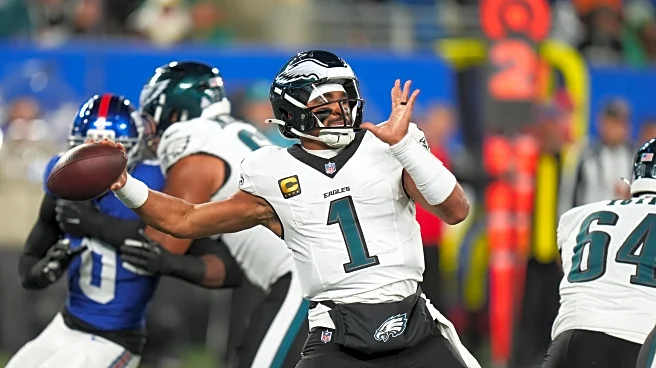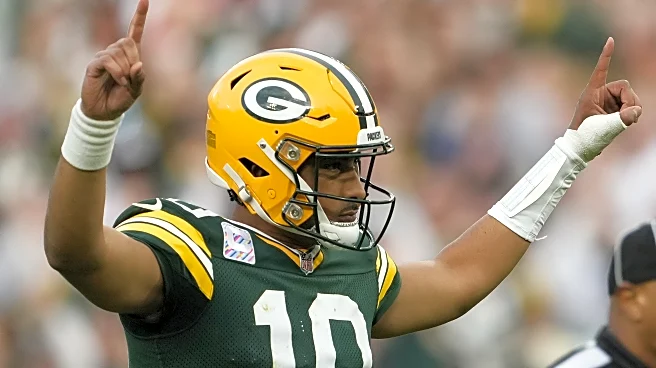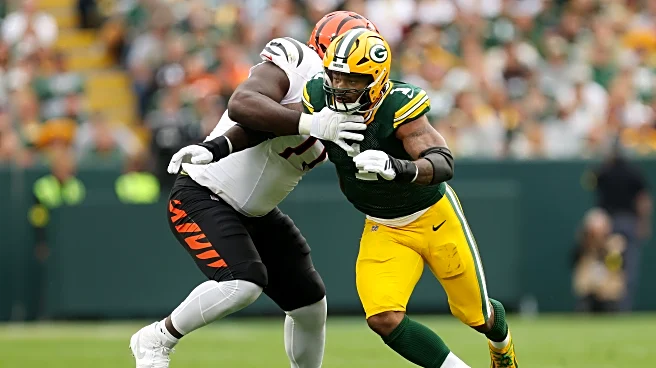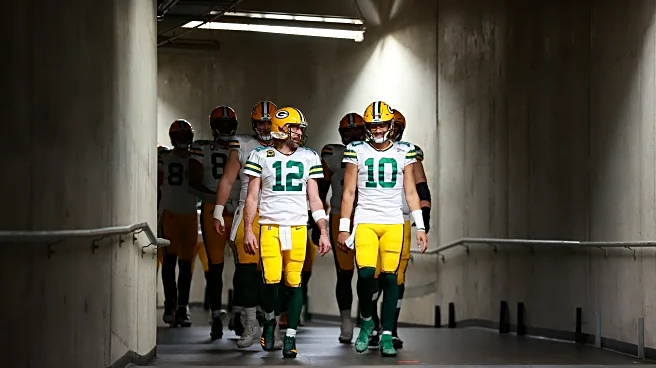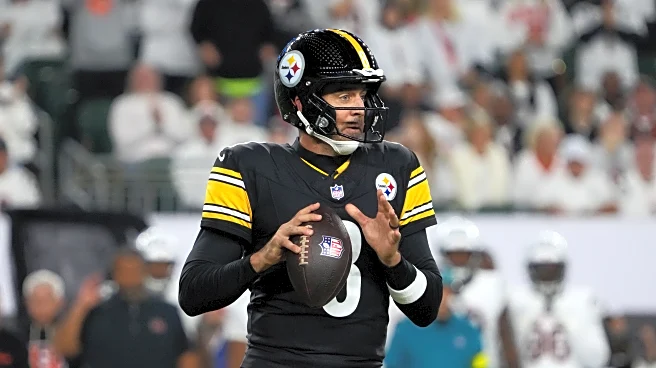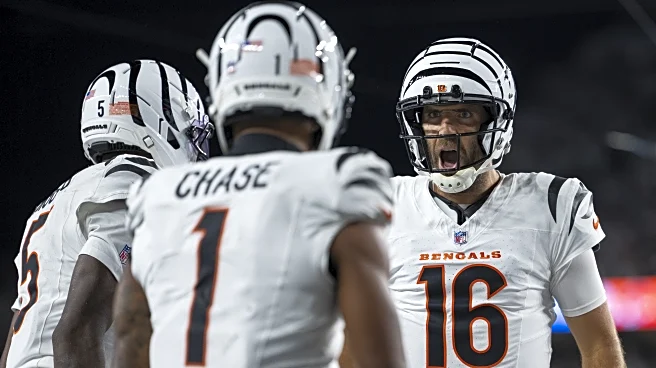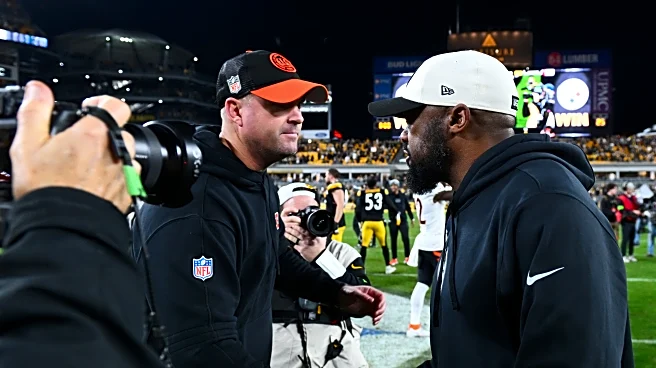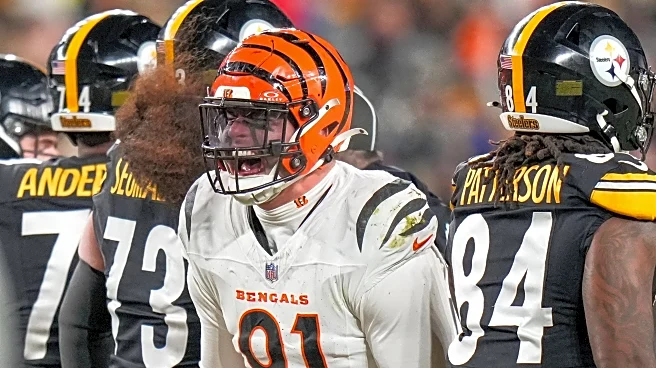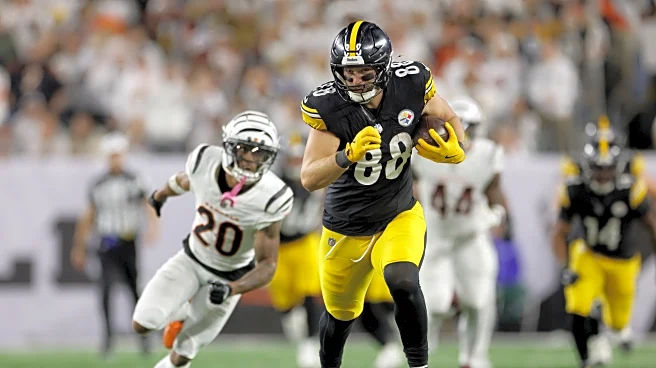What's Happening?
Current Green Bay Packers quarterback Jordan Love and former Packers, now Steelers quarterback Aaron Rodgers, are the only two starting quarterbacks in the NFL who have not targeted a wide receiver 10 or more times in a game this season. This unusual
statistic highlights a curious overlap between the two players, despite their different team contexts. Love's approach seems to be influenced by the Packers' roster, which lacks a clear top receiver, leading him to distribute passes evenly among multiple targets. Conversely, Rodgers, who has a standout receiver in DK Metcalf, acquired by the Steelers this offseason, might be expected to focus more on Metcalf, yet he continues to spread the ball around.
Why It's Important?
This statistic is significant as it reflects the strategic choices made by quarterbacks in response to their team's roster composition. For the Packers, Love's distribution strategy might be a necessity due to the absence of a dominant receiver, potentially affecting the team's offensive dynamics and performance. For the Steelers, Rodgers' decision to spread the ball, despite having a top receiver, could influence team chemistry and game outcomes. This stat could impact how teams plan their offensive strategies and how opposing defenses prepare to counter these quarterbacks.
What's Next?
As the season progresses, it will be interesting to see if Rodgers adjusts his strategy to target Metcalf more frequently, potentially leaving this unique statistical category. For Love, the continuation of this trend might depend on the development of the Packers' receiving corps and whether a standout receiver emerges. Both quarterbacks' decisions will likely be scrutinized by analysts and fans, influencing discussions on quarterback performance and team strategy.
Beyond the Headlines
This statistic also raises questions about the evolving role of quarterbacks in the NFL and how they adapt to their team's strengths and weaknesses. It highlights the balance between individual performance and team dynamics, offering insights into how quarterbacks can influence game outcomes through their passing choices. The situation underscores the importance of adaptability and strategic thinking in professional sports.


